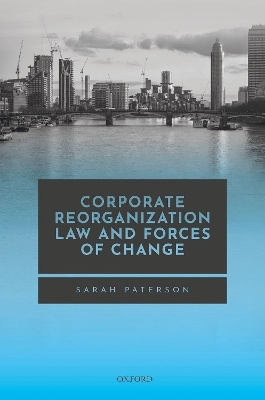
Corporate Reorganization Law and Forces of Change
Oxford University Press (Verlag)
978-0-19-886036-5 (ISBN)
Corporate Reorganization Law and Forces of Change argues that significant shifts in logics, practices, and identities in the finance and non-financial corporate fields can change the nature of the problem which corporate reorganization law is required to solve, so that corporate reorganization law is mobilized and adapted by the participants in the process in new and diverse ways. This book argues that, whichever theoretical or policy approach is engaged, these adaptations cannot all be evaluated using a single universal or fixed conceptual framework.
Adopting a comparative US/UK approach, the book undertakes a detailed analysis of six forces of change which developed in the finance and non-financial corporate fields from the 1980s. It analyses the ways in which these forces of change affected the nature of the corporate reorganization case, and the new ways in which participants in the corporate reorganization process mobilized and adapted corporate reorganization law in response. It argues that it is crucial to analyse the specific adaptations of corporate reorganization law which emerged from this process of change. This demands that corporate reorganization law theorists or policy makers do not start their analysis using a conceptual framework developed in response to historical adaptations of corporate reorganization law. It is necessary, instead, to identify how dominant theoretical or policy concerns manifest themselves in the specific adaptation of corporate reorganization law which is under review and to adapt conceptual frameworks accordingly.
This is a timely analysis. Just as the book is going to press, governments around the world have been forced to enact shut down measures to contain the Covid-19 threat. The book draws a distinction between adaptations of corporate reorganization law to reorganize complex, leveraged capital structures and other adaptations to reorganize a mixture of financial and other liabilities. It unpacks why it is necessary to adapt conceptual frameworks in different ways for these different types of case. This provides a way for scholars, practitioners, judges, and the legislature to think about corporate reorganization law when it is mobilized and adapted to meet the specific challenges posed for business by the Covid-19 shutdown.
Sarah Paterson is Associate Professor of Law at the LSE where she teaches and researches corporate insolvency and restructuring law. Before joining the LSE, Sarah was a partner in the Restructuring and Insolvency Group at Slaughter and May, with whom she retains a consultancy. She has written widely on insolvency and restructuring and is a co-author of Debt Restructuring 2e (OUP, 2016), and edits McKnight, Paterson and Zakrzewski on The Law of International Finance 2e (OUP, 2017).
1: Introduction
2: Emergence
3: The Rise of Leverage
4: The Rise of Trading
5: The Rise of Secured Credit
6: The Fall of the Lifetime Manager
7: The Fall of the Gentleman Banker
8: The Fall of the Honest Broker
9: Looking to the Future
10: The Approach in the Book and Implications for Reform
| Erscheinungsdatum | 15.01.2021 |
|---|---|
| Verlagsort | Oxford |
| Sprache | englisch |
| Maße | 165 x 242 mm |
| Gewicht | 642 g |
| Themenwelt | Recht / Steuern ► EU / Internationales Recht |
| Recht / Steuern ► Wirtschaftsrecht ► Bank- und Kapitalmarktrecht | |
| Recht / Steuern ► Wirtschaftsrecht ► Gesellschaftsrecht | |
| ISBN-10 | 0-19-886036-6 / 0198860366 |
| ISBN-13 | 978-0-19-886036-5 / 9780198860365 |
| Zustand | Neuware |
| Haben Sie eine Frage zum Produkt? |
aus dem Bereich


